When people think of Scotland’s islands, it’s usually the Hebrides they have in mind. But there are two other, very distinctive, island groups off Scotland’s north coast that are well worth the effort of reaching: Orkney and Shetland.
The best time to visit is during what Shetlanders call the “Simmer Dim”, midsummer, when the light never quite leaves the sky. Or in winter for the Northern Lights (aurora borealis) and Up Helly Aa Viking festivals. Or in spring, for the wildflowers. Or any time, really!
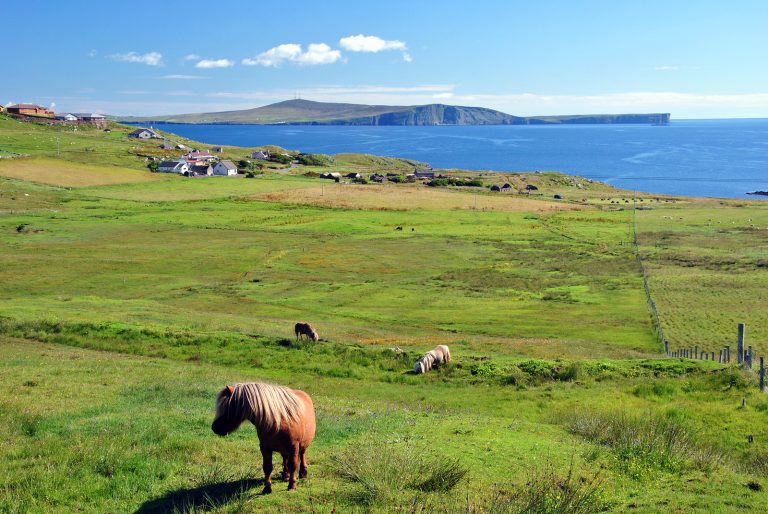
There are three different ferry services to Orkney and two to Shetland, and it’ll take you a couple of days to reach the islands from Edinburgh whichever you use. If you’re visiting both sets of islands, the best way is to drive up to the north coast, take the ferry to Orkney, cross to Shetland, and return on the overnight ferry to Aberdeen.
The Pentland Ferries catamaran from Gills Bay, near John o’ Groats, across the Pentland Firth to St. Margaret’s Hope, on South Ronaldsay, is the shortest, most sheltered sea route to Orkney; it’s also the cheapest if you’re taking a vehicle. There are four sailings a day, weather permitting (it doesn’t always!) and you pass several uninhabited islands on the way so there’s always something to look at.
Orkney Mainland
From St Margaret’s Hope you cross onto Burray and then the Mainland (largest island) by bridge. On your way, you can see three of Orkney’s major attractions. The Tomb of the Eagles is on South Ronaldsay; you’ll find both Stone Age and Bronze Age sites here, a little way apart. Then the ornate Catholic Italian Chapel, built in a tin shed by Italian prisoners of war during World War II (WWII), is just off to your right as you cross Lamb Holm.
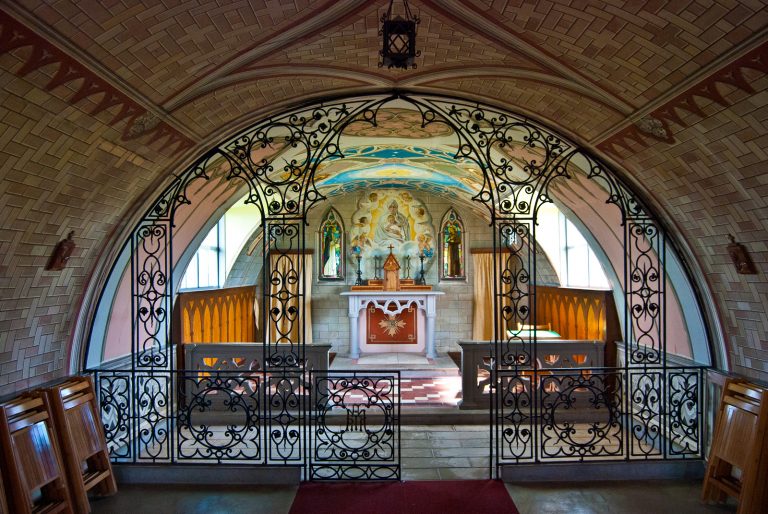
And you’ll be driving across the Churchill Barriers. They were part of the WWII defences of Scapa Flow, the sheltered water between the islands which was a major naval base. Scapa Flow is also the site of the sinking of the German WWI fleet in 1919; the ships are very popular with scuba divers.
Orkney’s main towns of Kirkwall and Stromness are both on the Mainland. Kirkwall has St Magnus’ Cathedral, which goes back to Viking times, the Bishop’s and Earl’s Palaces, which are somewhat later, the Highland Park distillery, and a busy harbour and fishing fleet. It also has some fascinating museums, including the Orkney Wireless Museum. Stromness prides itself on its artiness, offering craft shops and art galleries galore.
You’re never far from the ancient world in Orkney. On the A965 between Kirkwall and Stromness you’ll see signs to the right for Maeshow, an extraordinary Neolithic chambered burial cairn. Further along the road the B9055 heads off to the right past the Standing Stones of Stenness and the Ring of Brodgar, a Neolithic stone circle. This is the road to Skara Brae, Europe’s most complete Neolithic village, which pre-dates the Pyramids. After visiting Skara Brae, carry on up the coast to the Brough of Birsay, which has Pictish and Norse associations, including an 11th century sauna! The nearby ruins of the Birsay Earl’s Palace are also worth a visit.
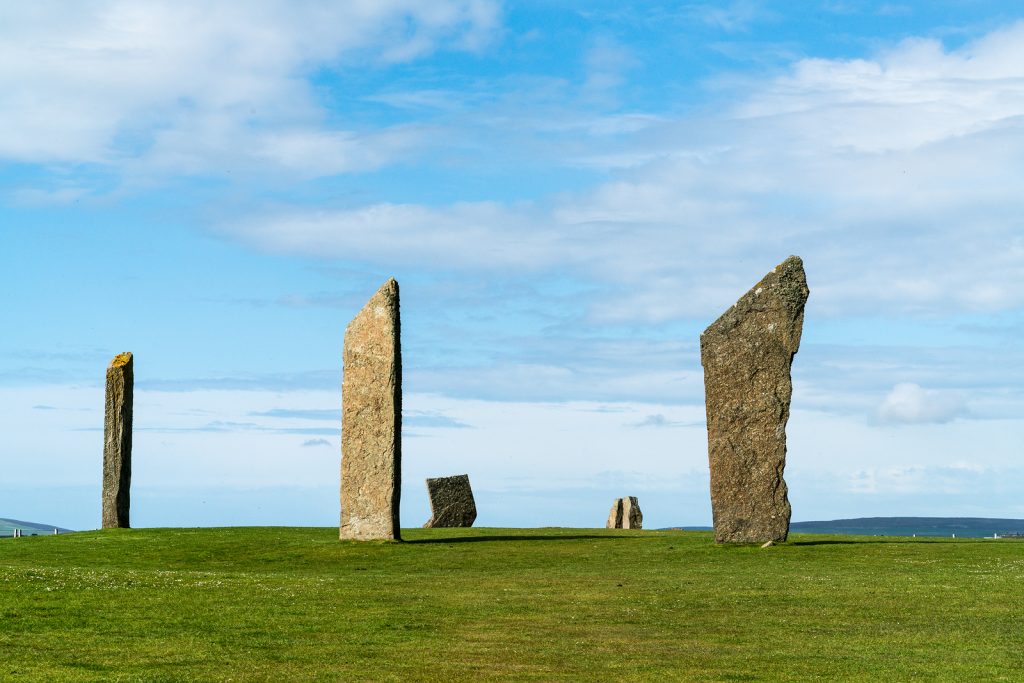
Smaller islands
To reach Rousay, take the Orkney Ferries ferry from Tingwall (you’re advised to book their ferries in advance if taking a vehicle). The island has over 160 archaeological sites going back 5,000+ years, including a Neolithic settlement of seven houses, similar to Skara Brae. If you follow the Westness Heritage walk, you can cover the entire period from the Stone Age to the mid 1800s in a single mile of coastal path. Even in pouring rain it’s an amazing day’s walk.
If all this ancient history is too much for you, how about climbing a sea-stack? Hoy, Orkney’s second-largest island, boasts a decidedly challenging climb, the 450-foot Old Man of Hoy. It’s quite a hike even to get there, but there’s plenty of wildlife to look out for as you tramp. At the southern end of the island you’ll find the Scapa Flow Visitor Centre, where you can find out all about the harbour and Orkney’s role in WWII. Cross the bridge and take the road past Longhope to Hackness to see one of the few surviving Martello Towers, part of the defences built to protect Scapa Flow during the Napoleonic Wars.
Westray, long and skinny on the map, is Orkney’s second-largest island. You reach it by passenger ferry (no vehicles) from Kirkwall, an hour and a half’s journey that can be enlivened by watching out for orcas, dolphin’s and sea-birds. Westray is famous not just for its archaeology (of course) but also as the home of hundreds of thousands of razorbills, guillemots and gannets, which nest by the lighthouse at Noup Head.
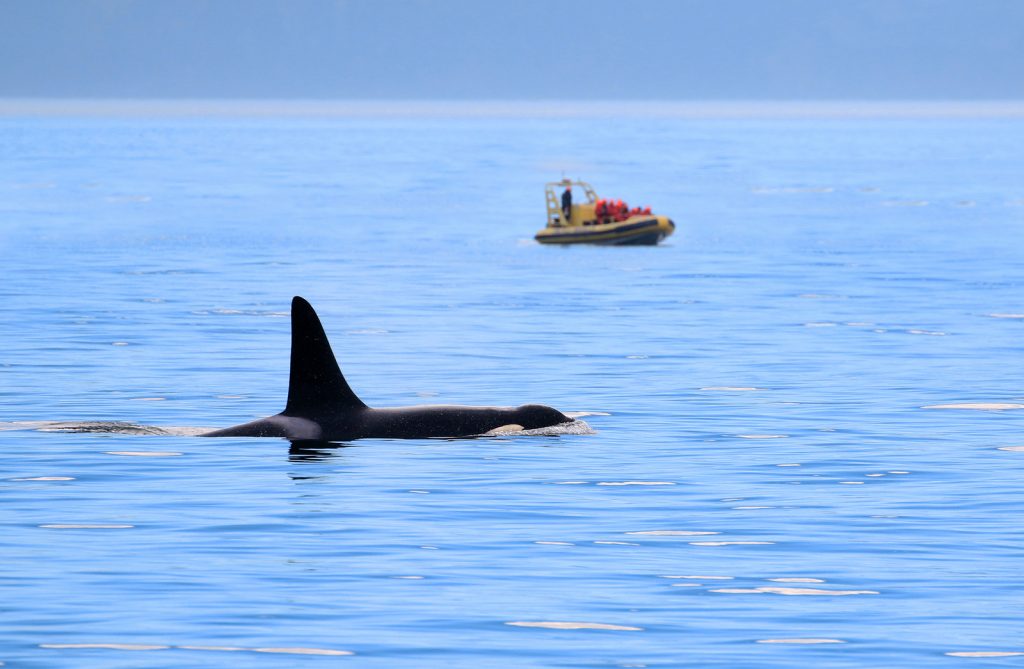
At the Heritage Centre in the main town, Pierowall, you’ll find the Westray Stone and the Orkney Venus, two fine stone carvings, and a short distance outside the town is Noltland Castle, a fine but unfinished Z-plan fortress.
Other unusual attractions on the island include a crab processing factory and the world’s shortest scheduled flight: less than two minutes, across to Papa Westray, which is home to the oldest standing house in northern Europe, the Knap of Howar, dating back 6000 years. Papay, as it’s also known, has a rare patch of maritime heath, and the North Hill bird sanctuary has terns, puffins and great skuas (known in the islands as “bonxies”).
Orkney Ferries can take you to 13 of the islands – more than we have time or space to cover here. Their site provides a page of information for each island with ferry access, so if you have plenty of time it’s a useful aid to planning extra excursions. However, we have to move on.
Shetland mainland
Head back to Kirkwall to take the NorthLink ferry to Lerwick, capital of Shetland, Great Britain’s northernmost outpost – nearer to Norway than to mainland Scotland and, indeed, a Norwegian province until 1469. There’s still a very Norse feeling to the place, especially if you’re there in January for the Up Helly Aa festival.
As on Orkney, there’s a wealth of ancient history laid bare at sites all over the country and plenty of scenic beauty and wildlife, too. Lerwick is a good place to get your ear in for the distinctive local accent and dialect words, many of which go back to Viking times. The city’s been a major fishing port for centuries and the harbour is still busy – though now you’re as likely to see oil-rig supply vessels and ocean-going yachts as fishing boats.
In the middle of town you’ll find Fort Charlotte, a five-sided fort dating from the 18th century Dutch Wars. There’s also the Shetland Museum, with its Boat Hall full of ships of all sizes and ages. Or, if you prefer, sample some local beers at the Lerwick Brewery, a family run business that launched its first beers as recently as 2013.
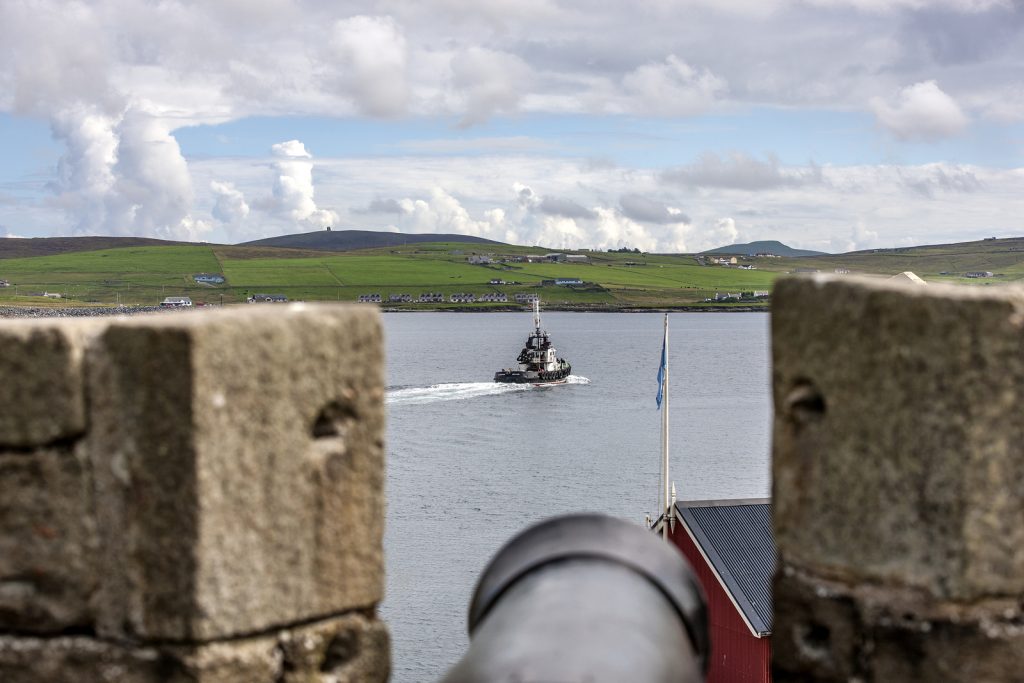
The Shetlanders have long been famous for their knitted lace and garments, and you can find out more in the Shetland Textiles Museum in the Bod of Gremista (the building’s as interesting as the contents). Shetland Wool Week, in late September, offers a packed programme of talks and events for textile lovers.
Down at the south of Shetland’s Mainland you’ll find Dunrossness and the Shetland Crofthouse Museum, which shows how crofters lived until the 1960s and later. Right at the tip of the island, at Sumburgh Head, you’ll find three attractions. The first two are from ancient history: the Old Scatness Broch and Iron Age Village, and the more famous Jarlshof settlement. The latter has buildings of all ages, from Neolithic, Bronze and Iron Age, Pictish, and Norse to mediaeval and 16th century structures.
Sumburgh’s third attraction is right up to date, an RSPB site famous for its thousands of puffins, kittiwakes, fulmars and other seabirds during the nesting season. The views out to sea are pretty spectacular, too, though you may find the site somewhat draughty.
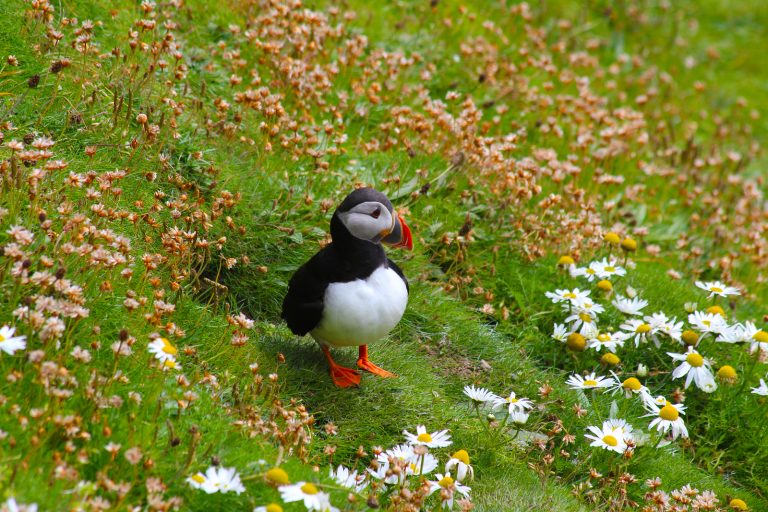
Head up the west coast to St Ninian’s Isle and take a walk across the UK’s largest active sand tombolo (causeway). You might discover more of the horde of silver Viking treasure that was unearthed under the island’s church in 1958…
Of the 100 islands in the archipelago only about 15 are inhabited – but that doesn’t mean there’s nothing to see on the others. Back on the east coast, you can take a boat from Sandwick to Mousa. No-one lives there now, but they did once: Mousa Broch is an Iron Age tower, one of the most impressive and complete in Scotland. You can climb stairs all the way to the top for fabulous views. At night the broch is home to swarms of storm petrels and it’s quite a sight as they come in through the darkness to roost.
Six miles from Lerwick, Scalloway used to be the capital of the islands. In the Scalloway Museum you can find out all about the Shetland Bus – nothing to do with public transport. It was the WWII scheme that used Shetland fishing boats to transport men, supplies and weapons to the Resistance in Nazi-occupied Norway. There’s also a castle built in the early 1600s by the local laird, Earl Patrick Stewart.
At Hillswick there’s a sanctuary for seals and otters and at Eshaness the Tangwick Haa Museum, another laird’s house full of local history, photos and artefacts. Eshaness also has a picturesque circular walk around the coastline, including the lighthouse (though that’s now privately owned and closed to the public).
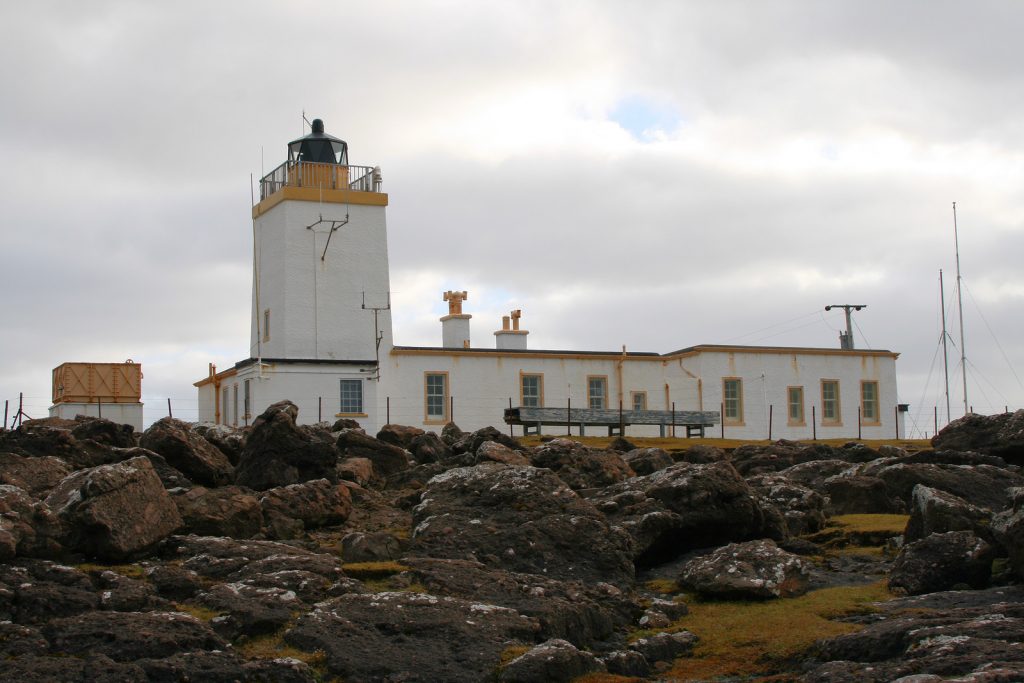
Rona’s Hill, Shetland’s highest point at 450m above sea level, is a good place for plant lovers, with alpine varieties such as mountain azalea and spiked woodrush. There’s a chambered cairn at the top and you can see almost the whole of Shetland laid out below you – even as far as Fair Isle if the weather’s good.
Other islands
Shetlands Islands Council operates the inter-island ferries. From the Mainland you can reach Papa Stour from West Burrafirth; Whalsay and Skerries from Laxo and Vidlin; Bressay from Lerwick; and Yell (from which you reach Fetlar and Unst) from Toft. You can also get to Fair Isle, which is owned by the National Trust for Scotland, from Grutness. All the ferries, except the Fair Isle one, can accommodate motorhomes.
All the islands are different and all are worth visiting but probably the most rewarding for the first-time visitor is Unst. Unst, the UK’s most northerly inhabited island, is home to possibly the oddest bus shelter in Britain: it’s fully furnished, with sofa, table and curtains, and gets a new “look” every year. You’ll find it at Baltasound.
For winter visitors, the island has its own Up Helly Aa festivals (several of them), slightly later than the Lerwick one. Unst is a also great place to watch the northern lights (aurora borealis) and, later, otters, puffins, and other wildlife.
The island’s Viking heritage is everywhere – this is thought to be where they made their first landings in what is now Great Britain. At Haroldswick there’s a reconstructed longhouse and the Skidbladner replica Gokstad ship. More longhouses have been excavated at Hamar, Underhoull and Belmont. The sites are open all year.
If all this Viking heritage has worn you out, a visit to Valhalla (where fallen warriors were revived with a horn of ale) is obviously indicated. The Valhalla Brewery is Britain’s most northerly and produces a range of 7 beers. Take a guided tour and then buy your own take-away reviver package.
Blow away the fumes of the beer with a visit to a nature reserve. There’s Keen of Hamar or Hermaness, dramatic on its cliff-top overlooking Muckle Flugga and home to thousands of nesting seabirds. You might see puffins, fulmars, shags, gannets and seals at the sea’s edge, and great skuas and red throated divers on the landward moorland stretches. Lovers of wild food should come later in the year, when the bilberries and crowberries produce their fruit.
On your way back to Lerwick for the NorthLink Ferry back to Aberdeen, take time to visit Yell’s white beaches and blue but chilly waters. If you haven’t yet had your fill of history, Yell also offers a folklore and local history museum at Old Haa, located in a 17th century laird’s house. The garden is also open and there’s a tearoom and craft shop, so it’s a great place to spend a few hours and stock up on quality souvenirs.
Camping
Camping in Orkney and Shetland is easy. There’s a variety of campsites all over the islands, with anything from 2 to 80 pitches. Many are community run; some are just regular car parks with electric hook-ups added. Not all have pump-out facilities or water points, so use them when you find them!
Wild camping is also permitted. The islands are not heavily populated and the outlook is relaxed so, as long as you don’t outstay your welcome, you’ll be fine. Do make sure the ground is hard enough to take the weight of your vehicle, though – you don’t want to end up in a peat bog. Watch out for the weather, too: many of the finest views are accompanied by strong winds.
If you do the whole trip we’ve outlined here, it will take you at least three weeks – and there’ll still be whole islands you don’t have time to see. The more time you can take, the better. It’s a long way to travel and trying to “do” the northern isles in a week is just a waste. If you haven’t time to do both sets of islands, do one. But promise yourself you’ll come back and do the other soon.
There’s nowhere quite like Scotland’s Northern Isles, at any time of year.